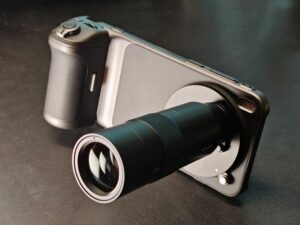The Oppo Reno14 Pro is the newest addition to the Reno series, positioned once again in the upper mid-range category for smartphones. Like its predecessors, it carries over some flagship-like features but remains more accessible in price and performance.
The Oppo Reno 14 Pro bears a resemblance to an iPhone at first glance, particularly in its front-facing design and overall symmetry. The flat-edged frame, centred punch-hole front camera, and minimal bezels create a silhouette that will remind many users of recent iPhone models.
Even the camera module, while different in layout, adopts a similarly bold presence on the back. This resemblance may be deliberate, as Oppo seems to be aiming for a premium aesthetic without actually positioning the phone as a flagship.
Physically, the Reno 14 Pro is quite slim and lightweight, which makes it easy to use with one hand. The glass back is finished in a matte texture that is resistant to smudges and offers a decent grip. The camera module at the back is fairly large, which lends the phone a distinct visual character. However, it also causes a slight wobble when placed on a flat surface.
The display is one of the Reno 14 Pro’s stronger points. It features a 6.83-inch AMOLED panel with a 120Hz refresh rate and a resolution of 2,800 by 1,272 pixels. Colours are vibrant, blacks are deep, and the display holds up well under direct sunlight, thanks to a peak brightness of up to 1,200 nits.
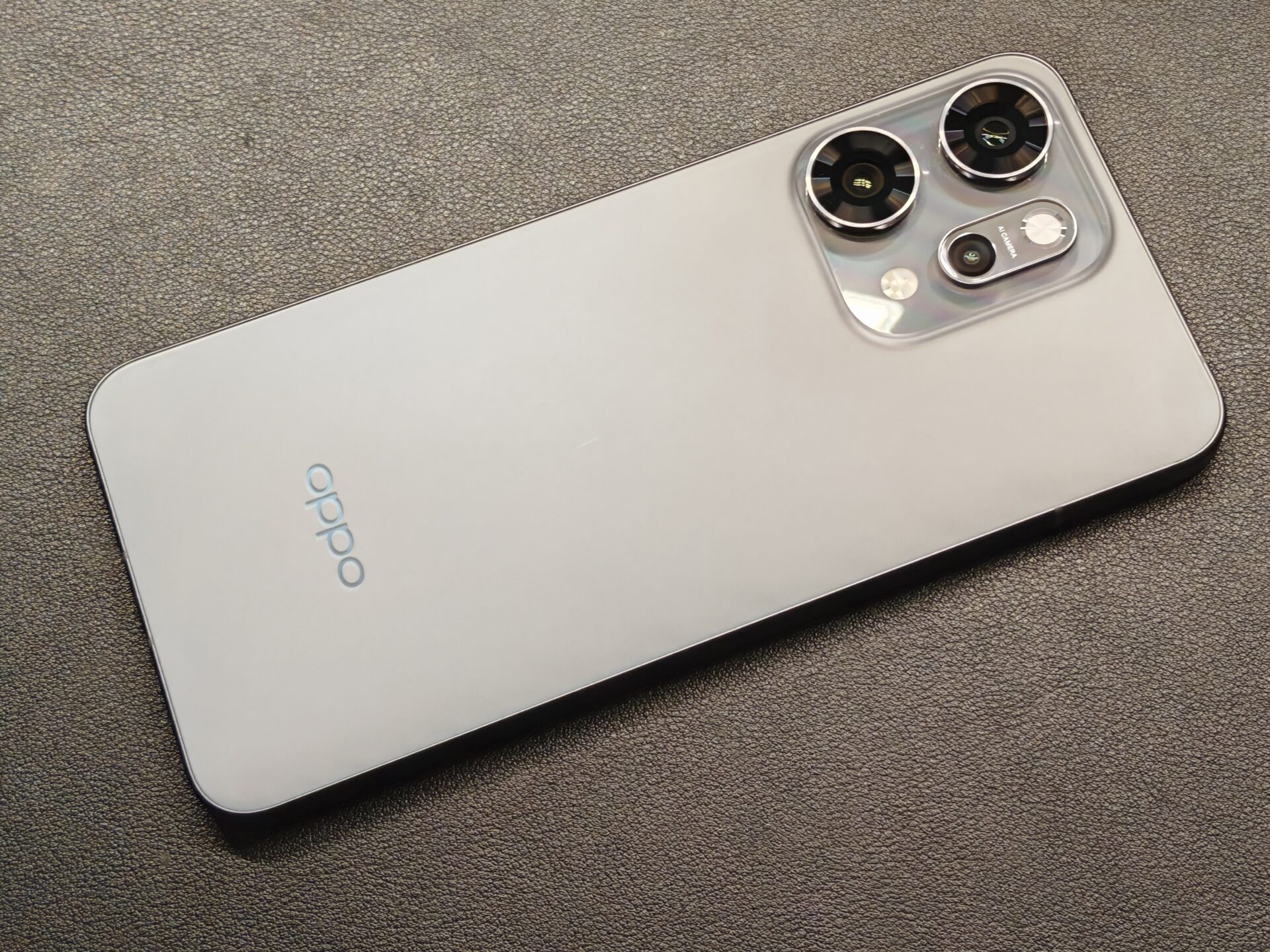
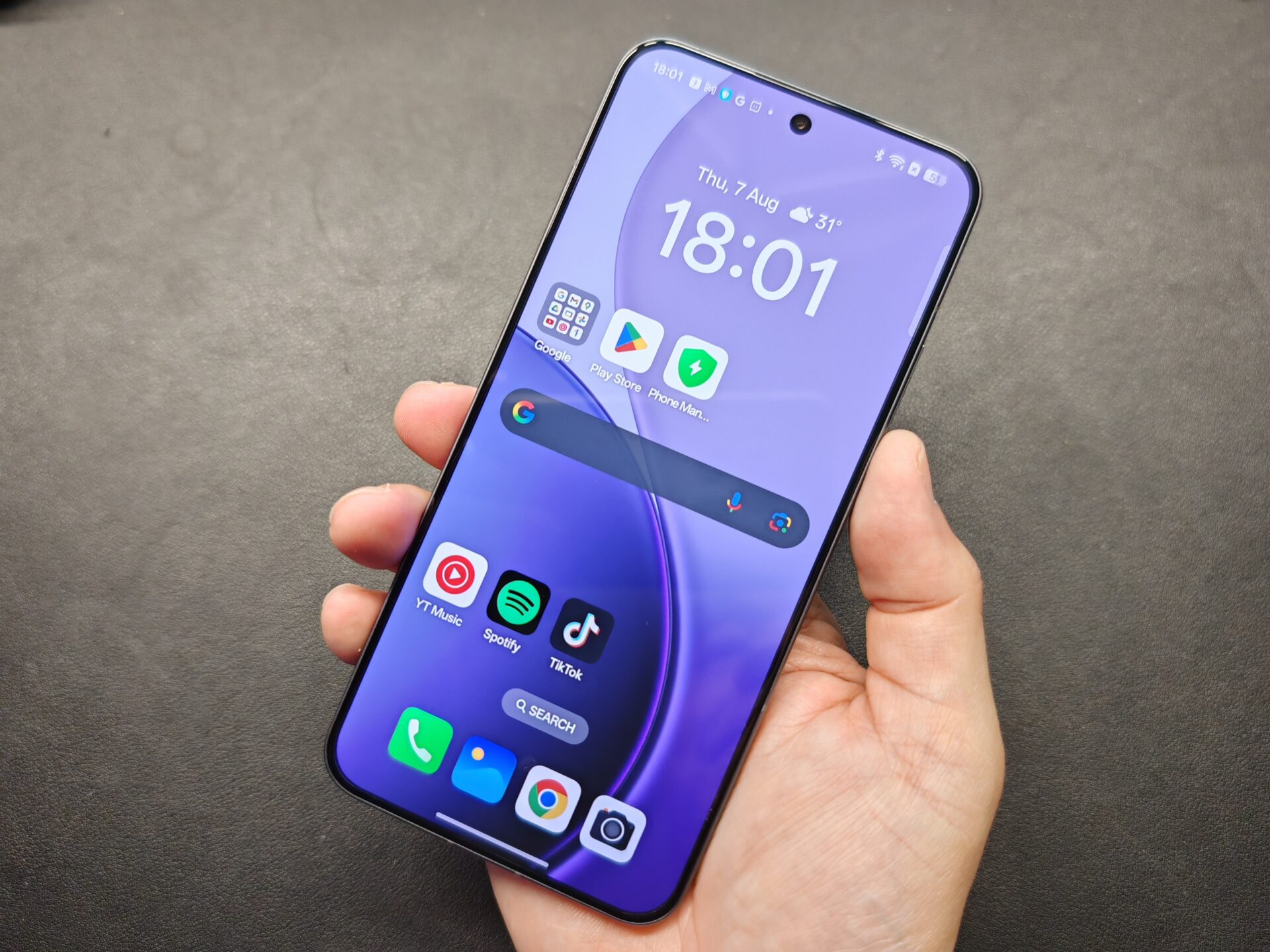
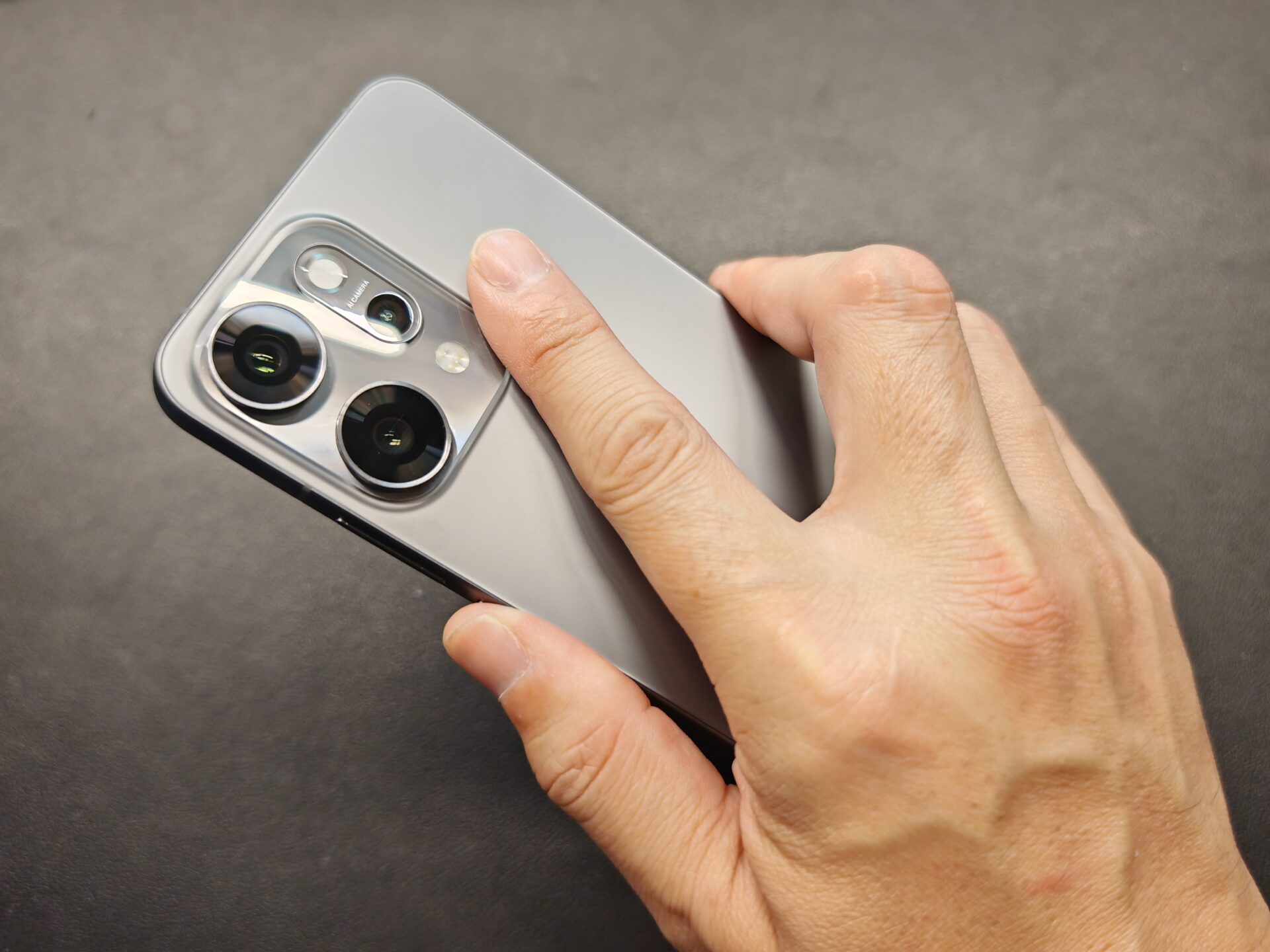
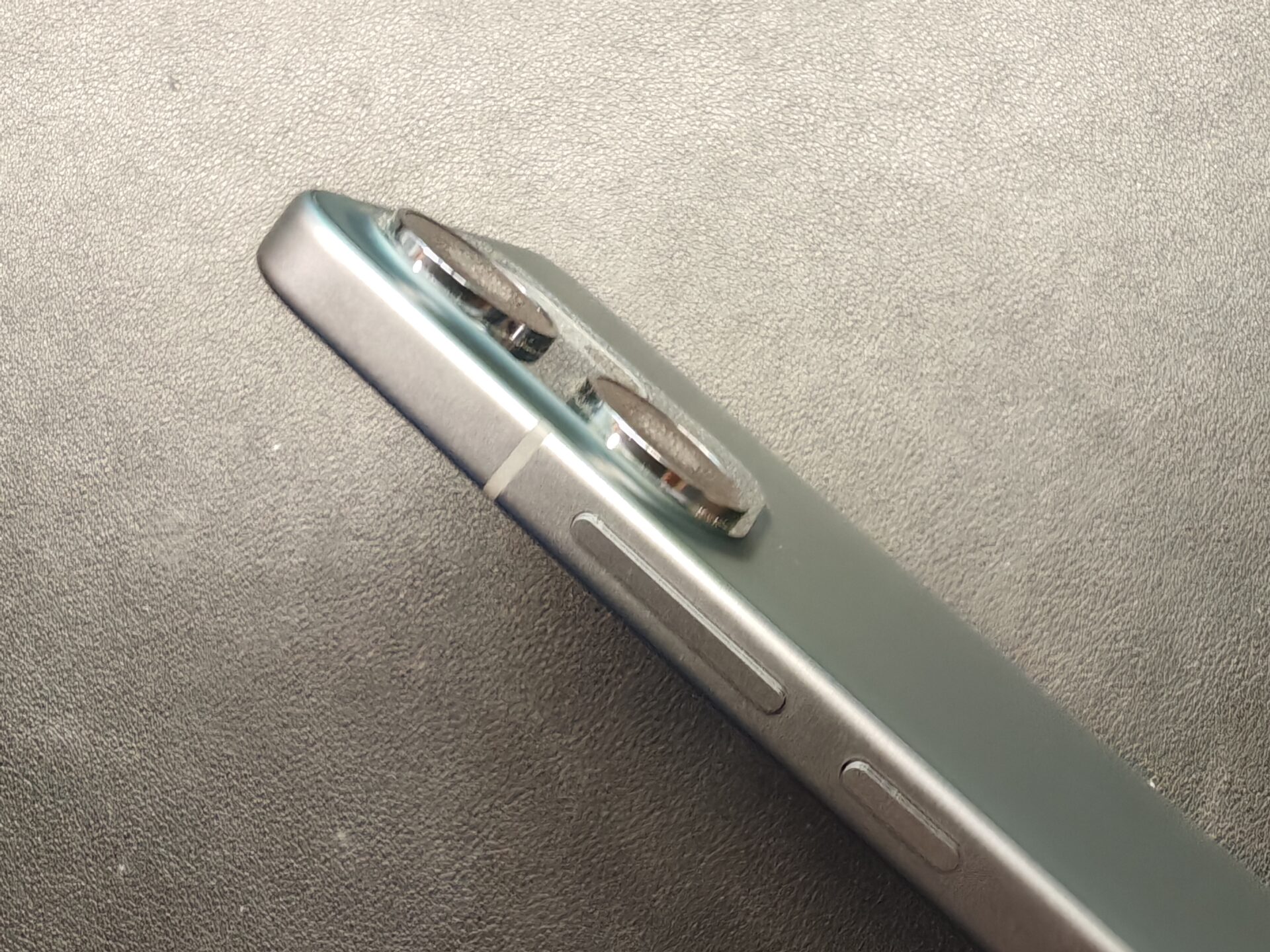
The high refresh rate helps smooth out motion, especially when scrolling through apps or navigating the interface. That said, this is a feature that’s becoming increasingly standard, even in budget devices. The screen and sides of the phone are flat like the iPhone and feel secure in your hands.
Under the hood, the phone is powered by the MediaTek 8450 processor. This chip is aimed at mid-range devices and performs reasonably well in most day-to-day tasks. Web browsing, messaging, social media, and light gaming are all handled without much issue.
The unit I tested came with 12GB of RAM, which is more than sufficient for multitasking, and 512GB of internal storage. Although there is no option to expand storage with a microSD card, the built-in capacity should be enough for most users.
The camera system features a 50-megapixel main sensor with optical image stabilisation (OIS), a 50-megapixel telephoto lens, and a 50-megapixel ultrawide sensor also equipped with OIS, which should be good enough for even the most discerning photography enthusiasts.
The main sensor produces decent images with good detail in well-lit conditions, and colours tend to lean slightly towards the warmer side. In low light, the camera performs reasonably well, but some softness and noise begin to appear when you look up close. Therefore, it is best to manually activate night mode when shooting indoors, at sunset, or for nightscapes.
The 3.5x optical zoom periscope telephoto camera, equipped with a higher-resolution sensor, is a welcome addition. However, its use is limited in poor lighting conditions, and the AI sharpening can be a bit overzealous. The ultra-wide camera is ideal for capturing landscapes, group shots, and interiors in good lighting conditions. Just take care of the distortion at the corners.
The front camera is also 50MP, which sounds impressive on paper, but in practice, results vary. In good lighting, selfies appear crisp and detailed, but aggressive smoothing tends to kick in if skin smoothing is enabled. Those who prefer natural-looking images should switch off the beauty mode.
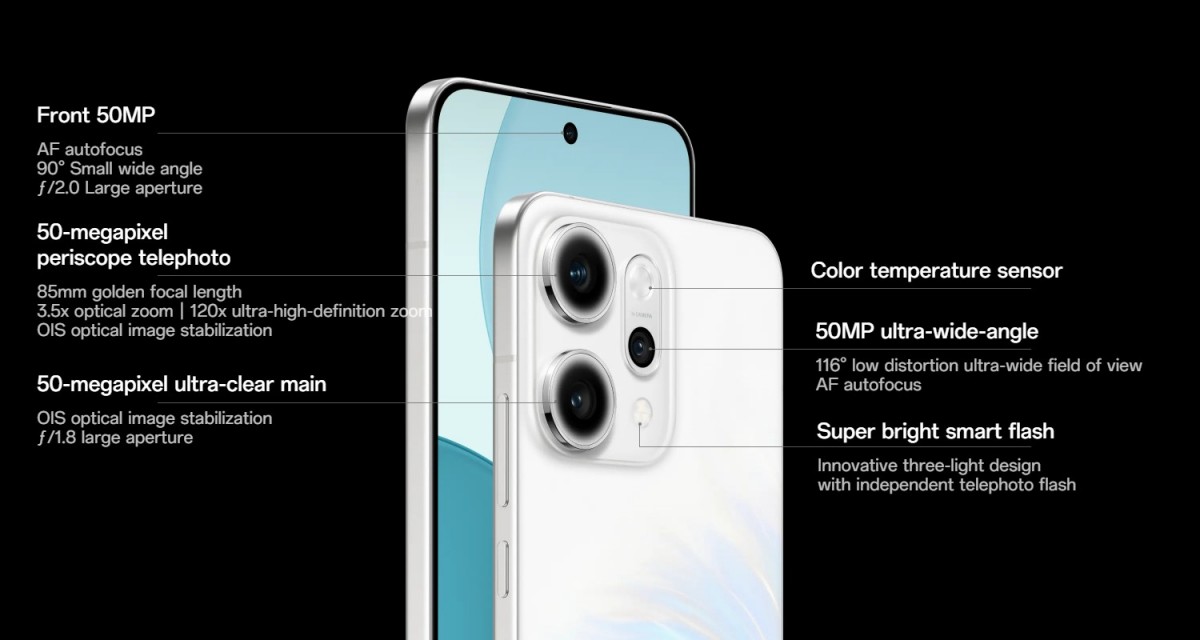


Note that video recording is supported up to 4K at 60 frames per second on both the front and rear cameras. Stabilisation is available, and results are generally stable for handheld footage, which is sufficient for the occasional Instagram Reels or TikTok vlogs.
Unlike the Oppo flagship Find X8 Pro, the Reno 14 Pro’s camera system lacks the Xpan mode, which has an excellent monochrome filter that adds a bit of fun when shooting street scenes.
What about battery life? The Reno 14 Pro performs well here too. It features a massive 6,200mAh battery, which easily lasts a full day of typical use, including Web browsing, messaging, streaming video, and light photography. During my tests, the phone often lasted for two days of light usage before needing to be recharged, which is impressive.
Heavier users might drain the battery more quickly, but it should still last most of the day without the need to reach for the charger. When charging is required, the 80W wired charging does its job efficiently.
In my tests, the phone completed a full charge in under an hour, leaving it ready to go, say, after a meal over lunch. The phone also supports a very zippy 50W wireless charging if you buy the Oppo AirVooc charger.



Software-wise, the phone runs on Oppo’s ColorOS 15. The interface is clean and modern-looking, but it still comes with several pre-installed apps, such as iQiyi, ReelShort, Safety, and Trip.com, which may not be necessary for all users. While many of these can be uninstalled or hidden, they still contribute to a slightly cluttered first experience.
On the flip side, navigation is fluid, and there are a number of features such as floating windows, flexible split-screen options, and AI-powered translation tools. I find the split screen useful, but with limited screen space, switching between windows is just as fast.
In terms of connectivity, the phone supports 5G, dual SIM, eSIM, Bluetooth 5.4, and Wi-Fi 6. The audio quality is acceptable, with stereo speakers that produce a loud enough sound for casual listening. There is no headphone jack, so users relying on wired audio will need a USB-C adapter or opt for wireless earbuds that support LDAC or aptX.
In daily use, the Oppo Reno 14 Pro feels like a phone built for consistency rather than extremes. It does not attempt to compete with flagship devices on raw performance or advanced features. Still, it delivers a stable and pleasant experience across most common tasks. The design feels modern without being flashy, the display is sharp and smooth, and the cameras are capable enough for everyday photography.
The phone’s build quality is also good, a few steps above budget phones on sale, and at S$999, it is not too expensive. For someone who values a clean design, dependable battery life, and a sharp display, it fits into that upper-range sweet spot quite comfortably.
One way is to wait for the discounts to come in as your favourite neighbourhood mobile shops cut prices to get your businesss. The Oppo Reno 14 will be more attractive if you can get it below its sticker price at launch.
For now, paying a little more, you could buy slightly older but possibly more capable flagship phones at around S$1,000 or so at competitive street prices. Take your pick from the Samsung Galaxy S25 Ultra, the Xiaomi 15, the Honour Magic 7 Pro or even Oppo’s own Find X8.





